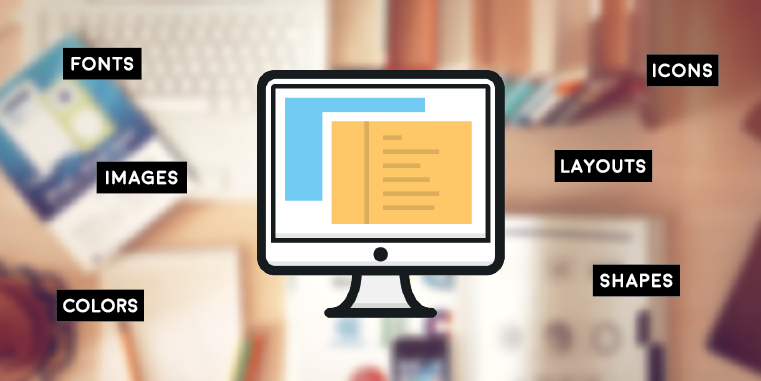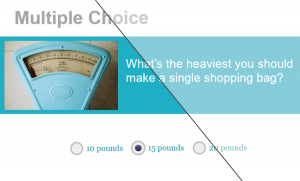Graphic Design vs. Visual Communications for E-Learning
This last week, I had the pleasure to traveling to Philadelphia, PA to teach our two-day workshop on Visual Communications for E-Learning. Besides this being one of my favorite topics to discuss, it’s also a topic that is shrouded in a lot of misconceptions. Visual communications, graphic design, and visual design are all terms that get lumped together and used interchangeably.
It easy to assume these terms all reference the way a course looks and feels. However, graphic design and visual communications for e-learning represent two very different types of design processes.
What’s the difference?
Graphic design for e-learning relates to the way your course looks and feels. This is how your fonts, colors, images, graphics, layouts, and effects work together to create a cohesive design.
- When you’re provided branding guidelines from your marketing department or client, that’s graphic design.
- When you crop or remove the background from an image, that’s graphic design.
- When you use shapes to create custom icons, that’s graphic design.

So, what about visual communications? If graphic design is all about the look and feel, what else is there to consider? Visual communications for e-learning relates to how you communicate ideas, processes, or procedures visually on the screen.
- When you carefully select an image to represent an important idea, that’s visual communications.
- When you create a series of animations to explain a complex process, that’s visual communications.
- When you design a diagram to show the relationships between different concepts, that’s visual communications.

Which one is more important?
Now that you know the difference between graphic design and visual communications for e-learning, which one is more important? The truth is, they’re both important…in different ways. Graphic design and visual communications should work together to help elevate your message and make it easier for your learners to understand, remember, and apply your learning content.

When the balance between graphic design and visual communications is off, it can detract from the effectiveness of your course. For example, what good is it to use effective graphic design techniques if you’re simply going to fill the slide with bullet points?

When you start the development of your course, graphic design plays an important role as you initially create your slide templates or prototypes. This is when you’ll want to make important decisions regarding colors, fonts and layouts. Visual communications, on the other hand, becomes more important during the storyboarding and development process. This is when you’ll start finding different ways to visualize the content of your course, whether it be with a carefully selected image, diagram, or set of animations.
Understanding the differences between graphic design and visual communications for e-learning can help you create more effective and beautiful courses.
If you’d like to learn more, check out some of these additional resources and upcoming free webinars:
Additional Resources:
- Graphic Design Tips for Beginners
- Graphic Design for Non-Graphic Designers
- Three Tips for Using Bullet Points in E-Learning
- Seven Ways to Use Stock Photos in E-Learning
- How to Create Icons in PowerPoint
- Four Tips for Using Characters in E-Learning
- Visual Communication for E-Learning Two-Day Workshop
Upcoming Free Webinars:
- Designing with Animation | Tuesday, August 16th at 12 PM ET
- Visual Communication Tips for E-Learning | Tuesday, November 1st at 12 PM ET

 Previous Post
Previous Post Next Post
Next Post




Thanks Tim! Great information and examples for new designers (and a good reminder for experienced designers, too). You’re such a great follow!
Thanks, Diana! I really appreciate it!